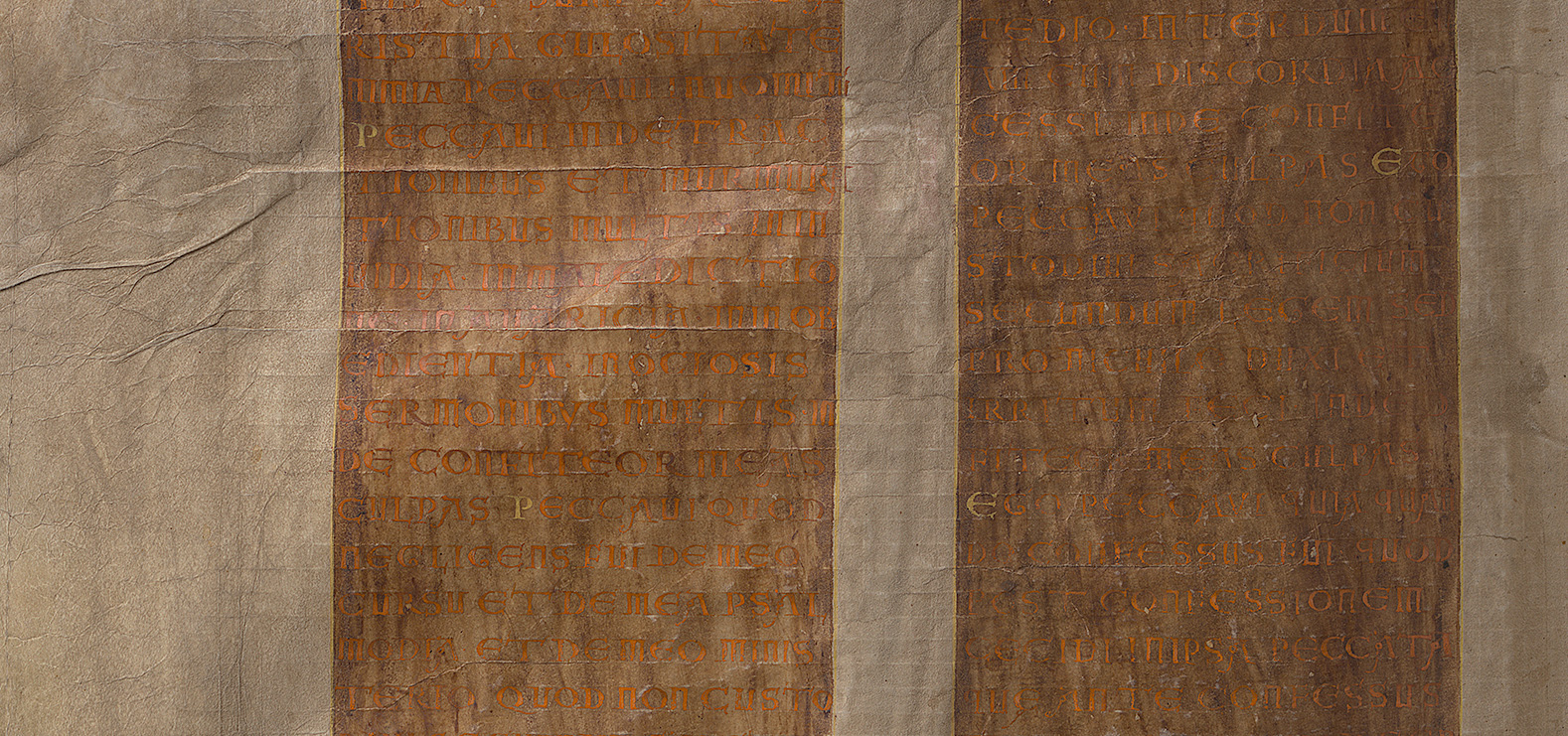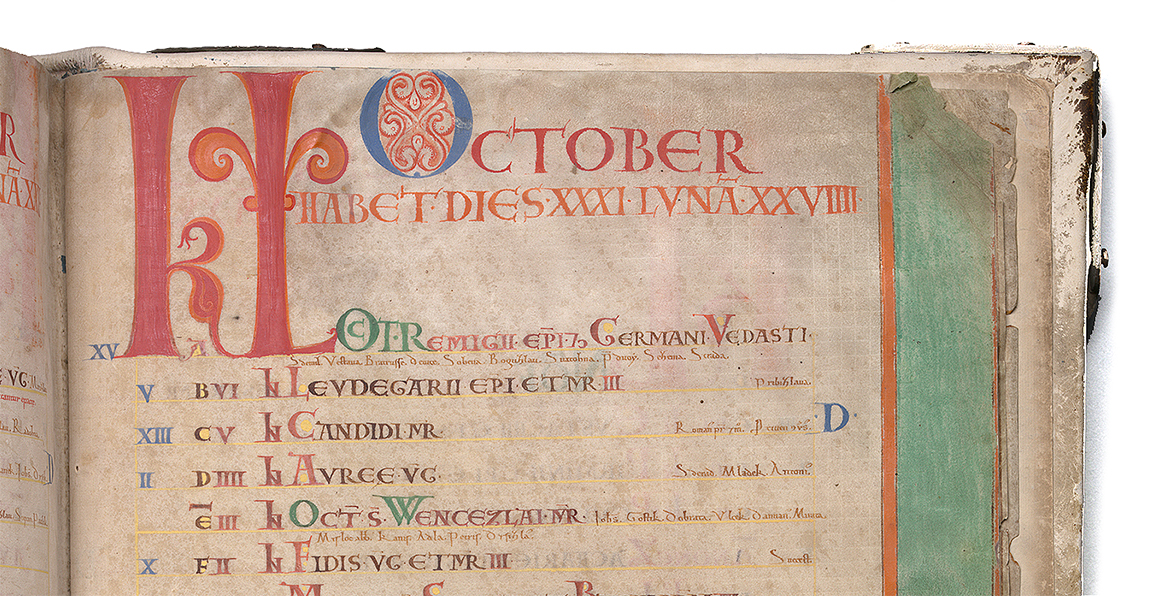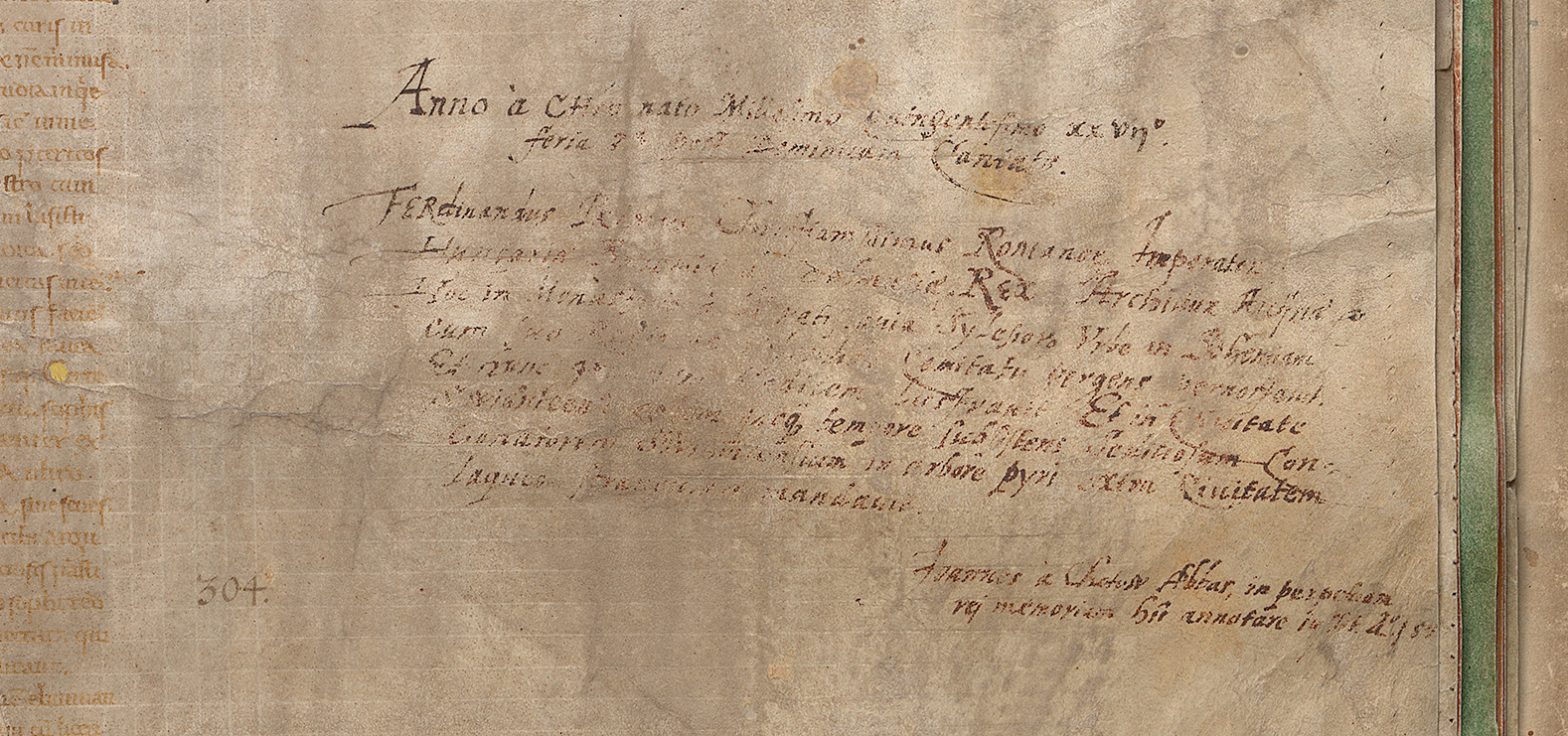Magic and scribblings
The Codex Gigas also contains some short texts. Among others, these include the confession of sins, a number of spells, a calendar and general-purpose scribblings.

The confession of sins appearing in the Codex Gigas is five pages long.
A churchman confesses his sins
The confession of sins appearing in the Codex Gigas is five pages long and appears just before the spread containing the Heavenly Jerusalem and the Devil. A churchman confesses his sins, ending with prayer for forgiveness and mercy.
Lists of sins could be very long, especially during the early part of the Middle Ages – these were entire catalogues of sins, consisting of a blend of major and minor vices. The large number of sins was meant to stress man's weakness. This method was used to inspire fear of committing wicked deeds.
Spells and magic
The spread appearing after the portrait of the Devil has three spells and two magic formulas. Perhaps they were placed there to counterbalance the Devil. The purpose of the spells is to cure sudden diseases and feverish states, while the formulas describe how to capture thieves using various rituals.
A spell is a religious or magical formula whose purpose is to obstruct or overcome evil, misfortune and disease. In the Middle Ages, spells were used in a variety of contexts, both within and outside the church.
Spell against fever
This spell adjures the bloodthirsty 150-clawed Dino, ordering it not to harm its victim by inflicting fever.
Latin
K X K Pat. Credo. Domine NE IFU(?) item contra febres fexes drex artifex. DINO sanguinem bibis et carnes manducas et in sanguine lauaris sed collige ungulas centum et quinquaginta et iace in uno loco quasi agnus anniculus. DORMI nunc et semper et per omnia secula seculorum Amen.
Translation
KXK Pater Credo. Lord ne ifu
more against fevers
fexes arex master dino
blood you drink and meat you eat and in blood you are washed
but collect 150 claws
and lie down in a place like a yearling lamb.
Sleep now and forever and ever. Amen.

The calendar takes up twelve pages in the Codex Gigas.
Calendar with festivals and dates of death
The final significant short text is a calendar listing the days on which saints were celebrated and those on which the observant were to commemorate the dates of death of people from Bohemia, from both within and outside the church. The calendar reckons dates differently than modern ones do. There were three principal days during each month. The other days of the month were named based on how many days remained until the next principal day.
Names and scribbling
The Codex Gigas contains just over fifty different notes that have been added over the years. A large part of them fall under the "I was here" genre – that is, various people who recorded their names, usually coupled with a short comment. Two Czech researchers wrote down their names as recently as the 1800s.
Note on an imperial visit
An example of a subsequent addition is a note from 1527. It was written by the abbot of Broumov Monastery and mentions that Emperor Ferdinand I spent the night at the monastery, which also housed the Codex Gigas at that time. Before arriving in Broumov, he had stayed in the nearby town of Świdnica where he, according to the note, had had “a rebellious preacher hanged from a pear tree outside the city”.

Note on Ferdinand I's visit.
